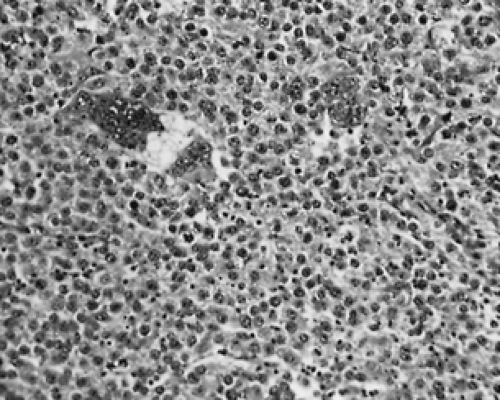GERM-CELL TUMORS
Any of the germ-cell tumors may produce steroid hormone effects, although some types do so with much greater frequency. Endocrine function depends on whether trophoblastic elements are present, because these secrete hCG, which, in turn, stimulates the opposite ovary to produce estrogen. Trophoblast may be present either in the form of isolated syncytiotrophoblastic giant cells (STGC) or as choriocarcinoma. The pathologist must distinguish these types, because the presence of STGC probably does not influence the prognosis of the tumor, whereas a significant amount of choriocarcinoma worsens the prognosis. The tumors that may contain isolated STGC are embryonal carcinoma,25 dysgerminoma,26 and, rarely, teratoma. STGC are present in ˜5% of dysgerminomas (Fig. 102-6). Precocious puberty may be associated with any of these tumors when STGC are present because of gonadotropin production by these cells.25 Patients with embryonal carcinoma usually have elevated serum levels of α-fetoprotein as well as hCG, and the measurement of both of these tumor markers is used to monitor treatment. Primary ovarian choriocarcinoma is very rare; it may arise because of an ectopic gestation (gestational trophoblastic disease) or from neoplastic germ cells.
 FIGURE 102-6. Dysgerminoma with syncytiotrophoblastic giant cells. ×200
Stay updated, free articles. Join our Telegram channel
Full access? Get Clinical Tree
 Get Clinical Tree app for offline access
Get Clinical Tree app for offline access

|


